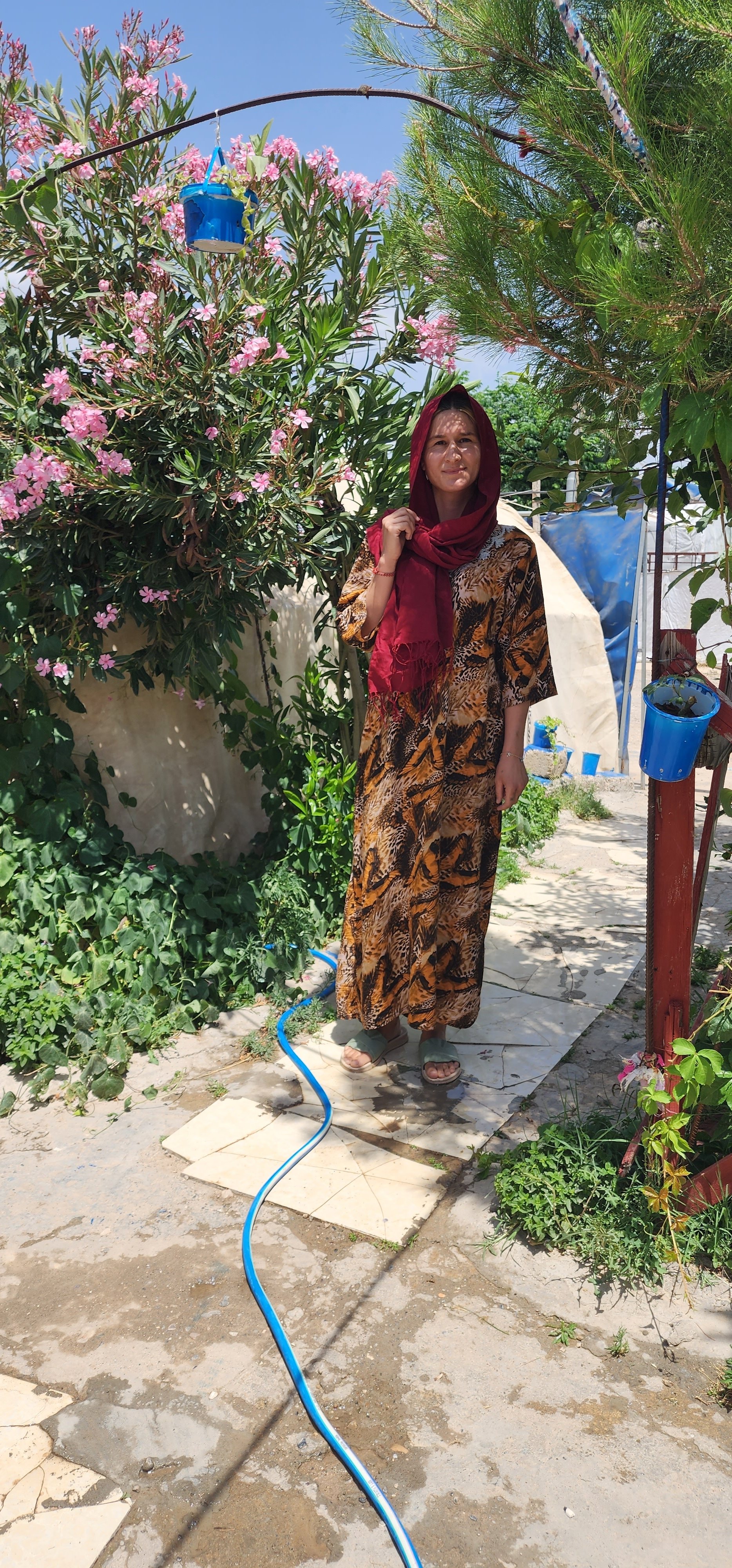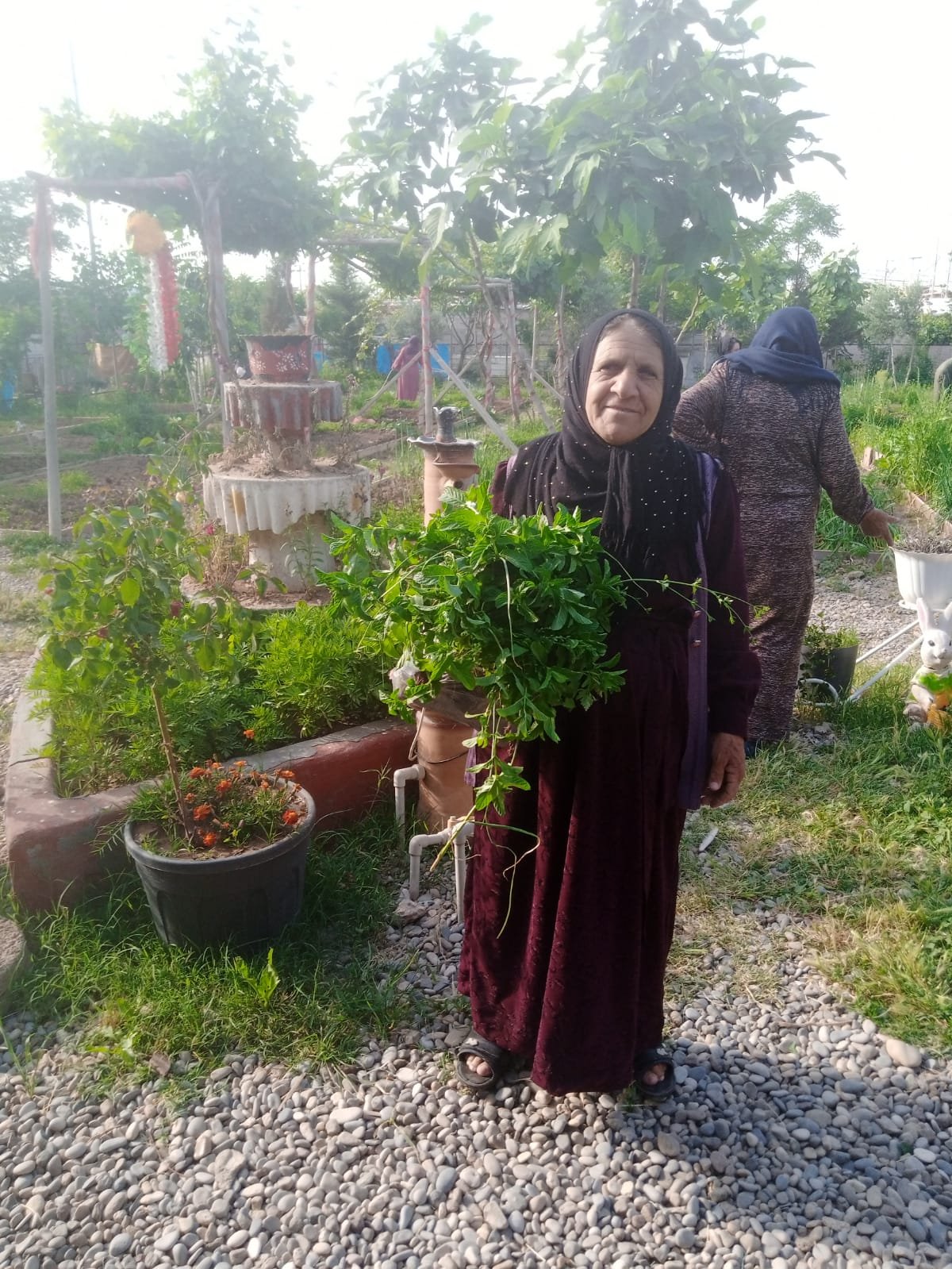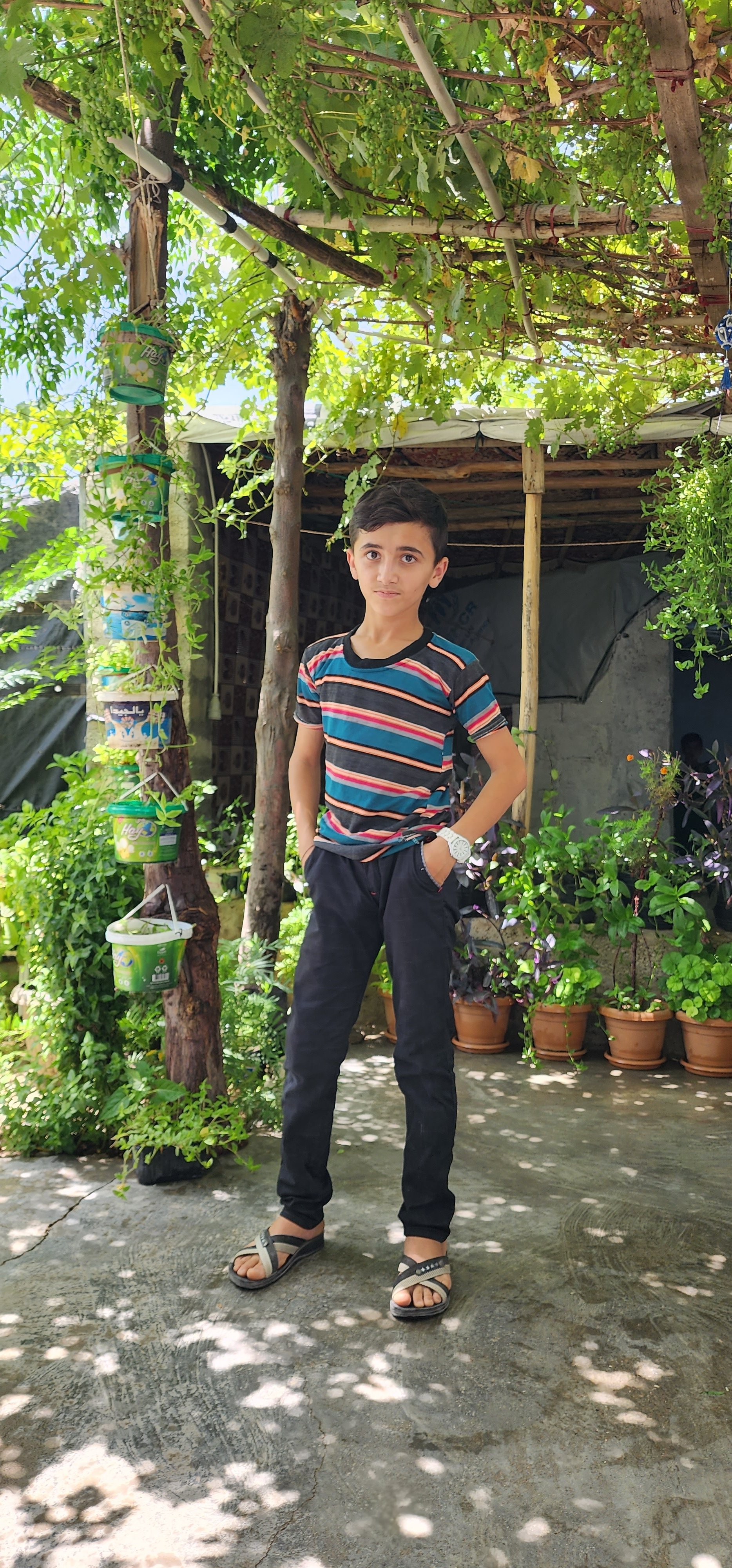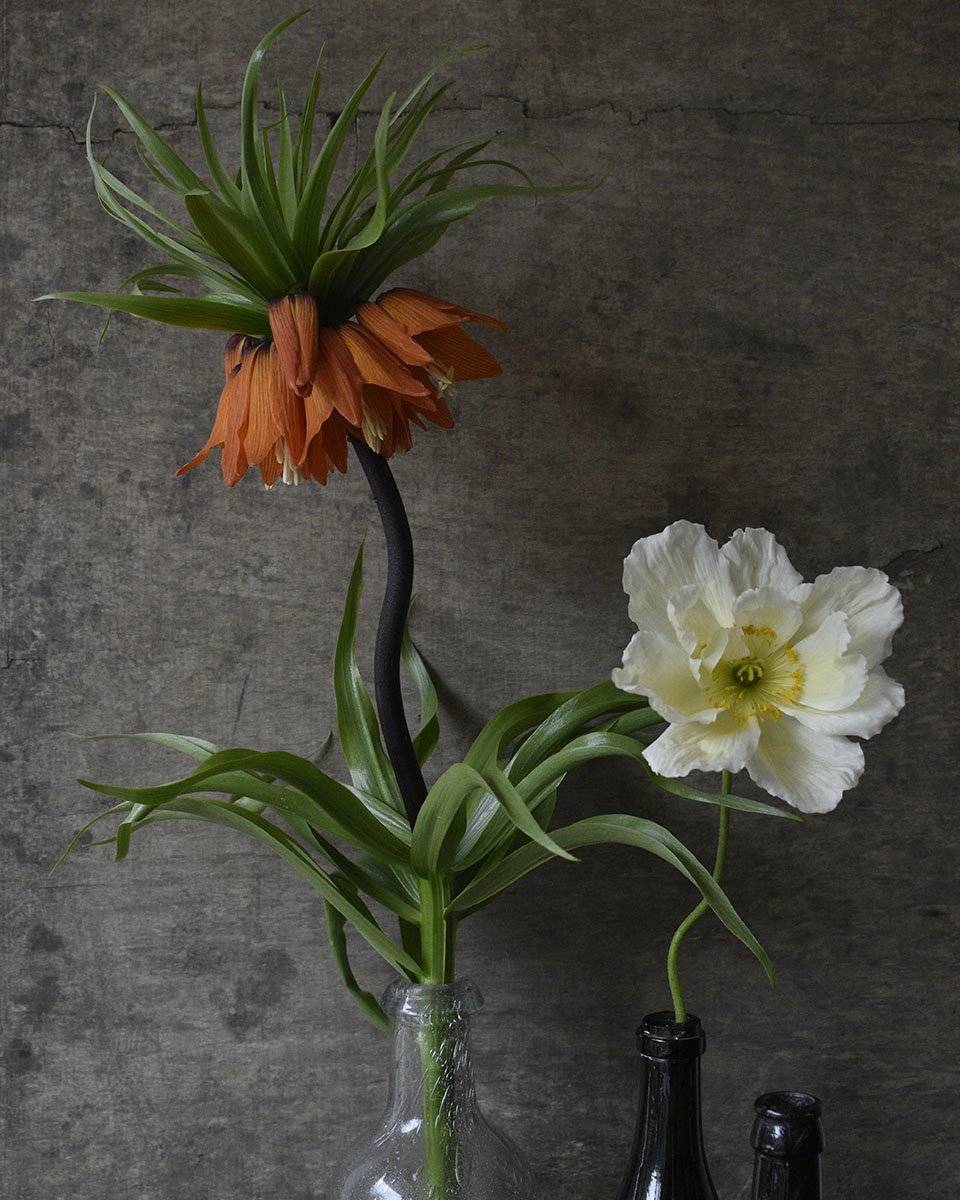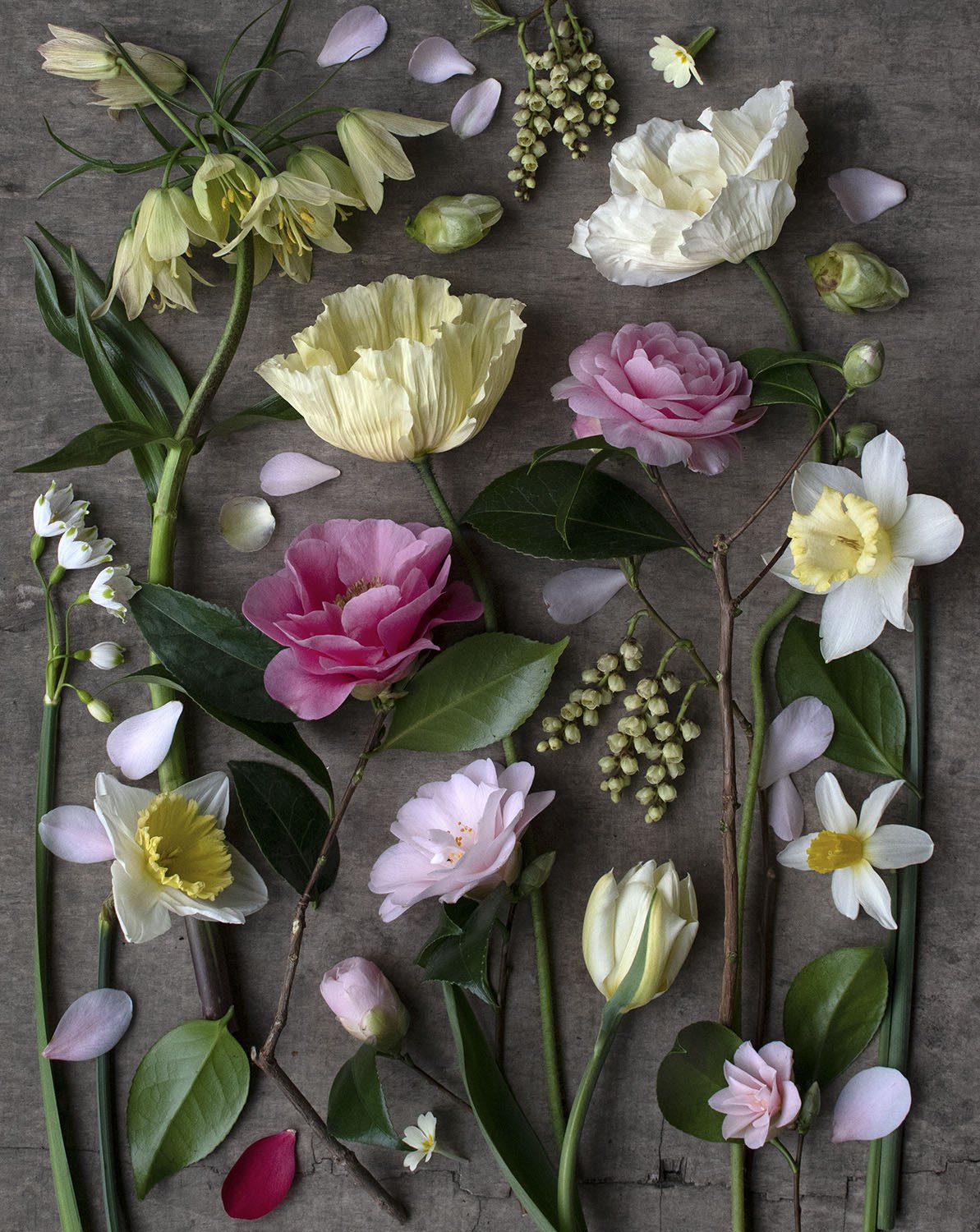High summer has finally arrived and it’s a beautiful, sunny day here in Derbyshire, North England. It seems like all the different plant groups have now come together to provide us with an abundance of blooms, berries, seed-heads and delicious fruits. The flowers in my latest print (pictured above) are, for me, the epitome of the garden in July.
Attention-grabbing lilies are having their moment, filling gardens with intoxicating scent. Lily ‘African Queen’ (The largest flower in this picture) is one of my favourites. I love to see it alongside richly-coloured annuals such as snapdragon ‘Monaco Orange’, also pictured.
More subtle in colouring, but equally appealing are the diminutive flower buds of the plume poppy (see below), which makes a towering perennial plant with large grey-green leaves. It’s a wonderful addition to the garden if you have plenty of space.
Another great joy in July is that we can now happily munch our way around the garden. Blueberries are my favourite gardening snack and can be seen in this print, only just beginning to ripen. Here in my own garden, a steeply-sloping borrowed plot of land, there are tasty gooseberries and strawberries, becoming sweeter by the day under the heat of the summer sun.
The names of all the plants featured in this new print are listed below, but just before I go, I’d like to say a huge thank you for your purchases and messages throughout June, in support of the Lemon Tree Trust’s community garden appeal. They are over the moon with the donation and also pass along their thanks.
July’s Print-of-the-Month includes…
Californian Poppies 'Thai Pink Champagne', 'Apple Blossom Chiffon' & Thai Silk Strawberry Fields',
Painted Daisy 'Rainbow Mix'
Blueberry fruits & Viburnum berries
Amaranthus 'Autumn Touch'
Nasturtium 'Ladybird Rose'
Nicotiana 'Smokey Purple' & 'Bronze Queen'
Physocarpus capitatus seed-heads
Plume Poppy foliage and flower buds
Lily 'African Queen'
Snapdragon 'Monaco Orange' / 'Opus Early Bronze'
Helenium 'Moerhiem Beauty'
Clover picked from a cover crop
A selection of Zinnias & a few petals of Dahlia 'Floret'.





